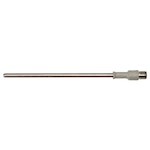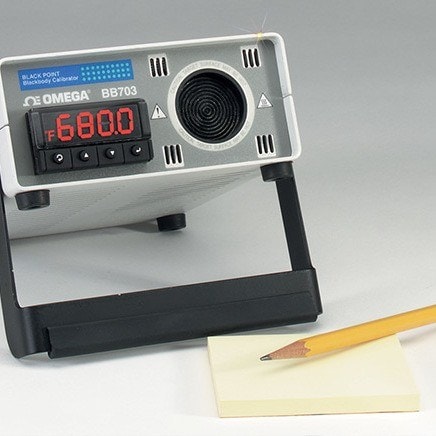Vibrations in industrial environments, whether caused by machinery, fluid movement, or even acoustical noise, can impose serious stress on thermocouples and RTDs. These forces may act along the length of the sensor (axial) or across it (cross-flow), gradually reducing heat transfer efficiency, weakening structural integrity, and distorting temperature measurements. Understanding how different types of vibrations impact sensors, along with proven strategies to mitigate their effects, is an essential step towards maintaining accurate and reliable temperature monitoring in demanding applications.
How Vibration Affects RTDs
RTDs, utilized for their high accuracy and stability, are inherently more sensitive to vibration than thermocouples—especially traditional wire-wound designs. In these sensors, fine copper, nickel, or platinum wire is wound around a glass or ceramic core. While glass-core RTDs can be immersed directly into most liquids and ceramic cores handle higher temperatures, both constructions rely on delicate internal winding that can shift or break under sustained mechanical stress. Platinum is the preferred material, offering the best precision over wide temperature ranges, and sensors manufactured to ASTM E1137 standards deliver tight tolerances and dependable performance.
For applications where vibration is a concern, thin-film RTDs provide a significant advantage. These sensors are made by depositing a thin layer of platinum onto a ceramic substrate and etching an electrical circuit into it. This solid-state design resists shock, thermal cycling, and vibration far better than wire-wound alternatives. Thin-film RTDs also respond quickly to temperature changes and maintain a near-linear resistance curve, delivering accurate, repeatable measurements across broad ranges. This is true even in installations subject to persistent mechanical movement.
How Vibration Affects Thermocouples
Thermocouples are generally more rugged than RTDs and better suited to withstand vibration. Their sensing junctions can be either grounded or ungrounded, with each choice influencing both response time and vulnerability to electrical interference. Grounded thermocouples, grounded to prevent static buildup that could skew readings, connect the sensing element directly to the protective sheath. While this improves heat transfer and speeds up response, it also makes the sensor more susceptible to picking up electrical noise from machinery, which can potentially distort measurements.
Thermocouples are constructed from various metal combinations, each selected for specific temperature ranges and process environments. When enclosed in protective metal sheaths, they become highly robust, providing substantial resistance to mechanical stresses. This makes them a reliable choice for installations where vibration is unavoidable, such as rotating equipment or turbulent flow lines. Even so, excessive vibration can eventually fatigue welds or compromise insulation, so careful installation and periodic inspection remain important.
Types of Vibrations that Affect Sensors
Vibration in industrial environments can come from many sources, and understanding these forces is essential to protecting RTDs and thermocouples. Generally, vibrations fall into three broad categories:
Mechanical Vibrations
These originate from equipment such as motors, pumps, and compressors. Their damaging potential depends on two factors:
- Amplitude - The strength or magnitude of the vibration force; for instance, a faster-spinning motor generates greater amplitude
- Frequency - How rapidly the force oscillates back and forth; equipment often vibrates in multiple directions, each with different amplitudes and frequencies—the combined effect can fatigue sensor components over time
Acoustical Vibrations
Noise from turbines, engines, vehicle traffic, or even voices creates sound waves that can enter surrounding structures and transform into structural vibrations. This phenomenon is amplified by reverberation, where sound reflects off surfaces and continues to resonate even after the original source stops. The unpredictable ways sound waves interact with different surfaces make acoustical vibration a challenge to control.
Flow-Induced Vibrations
When fluids move around or inside a structure, they exert fluctuating forces that can cause the structure to vibrate. In pipelines and cylindrical probes, these are classified as:
- Axial-Flow Vibrations - Where fluid moves parallel to the sensor axis
- Cross-Flow Vibrations - Where fluid moves perpendicular to the sensor, potentially causing oscillations that compromise measurement stability
Each of these vibration types can lead to sensor drift, degraded accuracy, or premature mechanical failure. That’s why choosing the right sensor construction and mounting method is critical for reliable temperature monitoring in dynamic industrial systems.
Vibration Resistant Thermocouples and RTDs
Selecting the right sensor design is key to maintaining measurement reliability in high-vibration environments. DwyerOmega offers several sensor models engineered specifically to withstand mechanical stress, ensuring accurate and consistent temperature readings even under challenging conditions.
PR-26-Standard Vibration Resistant Imperial RTD Probes with M12 Connectors
PR-26 RTDsensors are engineered for robust, flexible temperature measurement in demanding industrial environments. Built with 316L stainless steel sheaths and housings for corrosion resistance, these probes feature a mineral-insulated stem that withstands up to 500 °C and can be bent to fit tight installations (beyond the rigid 2-inch tip). The standout feature is their M12 connector, rated to 250 °C—far exceeding typical M12 designs—enabling direct connection to high-temperature extension cables without compromising performance. Available in standard mounting threads or non-threaded styles, these sensors suit immersion, thermowell, or handheld applications. Tested to MIL-STD-202G for vibration resistance, the PR-26 delivers accurate, repeatable measurements in 2-, 3-, or 4-wire configurations across a wide range of control and monitoring systems.
Spring Loaded RTD Probes with M12 Connectors
PR-21SL RTD Probes are spring-loaded RTDs designed for use in thermowells. Their self-gripping spring mechanism maintains constant contact between the probe and the thermowell wall, safeguarding heat transfer efficiency and minimizing the effects of vibration. This design also allows for installation in shorter thermowells. The PR-21SL supports two-, three-, or four-wire configurations and fits standard 0.26-inch bore thermowells, making it a versatile choice for industrial applications.
RTD Probes with High Temperature Molded M12 Connectors
For installations that demand flexibility and vibration tolerance, the PR-31 RTD Probe with High Temperature Molded M12 Connectors is a robust solution. Constructed from 316 stainless steel with a mineral-insulated cable, the probe can be bent to accommodate tight or irregular spaces without compromising integrity. It has been vibration tested to MIL-STD-202G, Method 204D, Condition A, and operates reliably from -50 to 500 °C. Available in both 100 and 1000 Ω options, it’s suitable for 2-, 3-, or 4-wire applications.
M12 Thermocouple Probes with Mounting Threads and M12 Connectors
M12 Thermocouple Probes combine rugged construction with versatile installation options, making them well suited for processes where vibration and secure mounting are critical concerns. Available in Type J with 304 stainless steel sheaths (for -40 to 600 °C) or Type K with Inconel 600 sheaths (for -40 to 1150 °C), these probes handle a wide range of temperatures and environments. Standard models come with an ungrounded junction to reduce electrical noise pickup, with grounded versions offered for faster thermal response.
Connect with a DwyerOmega Expert Today!


